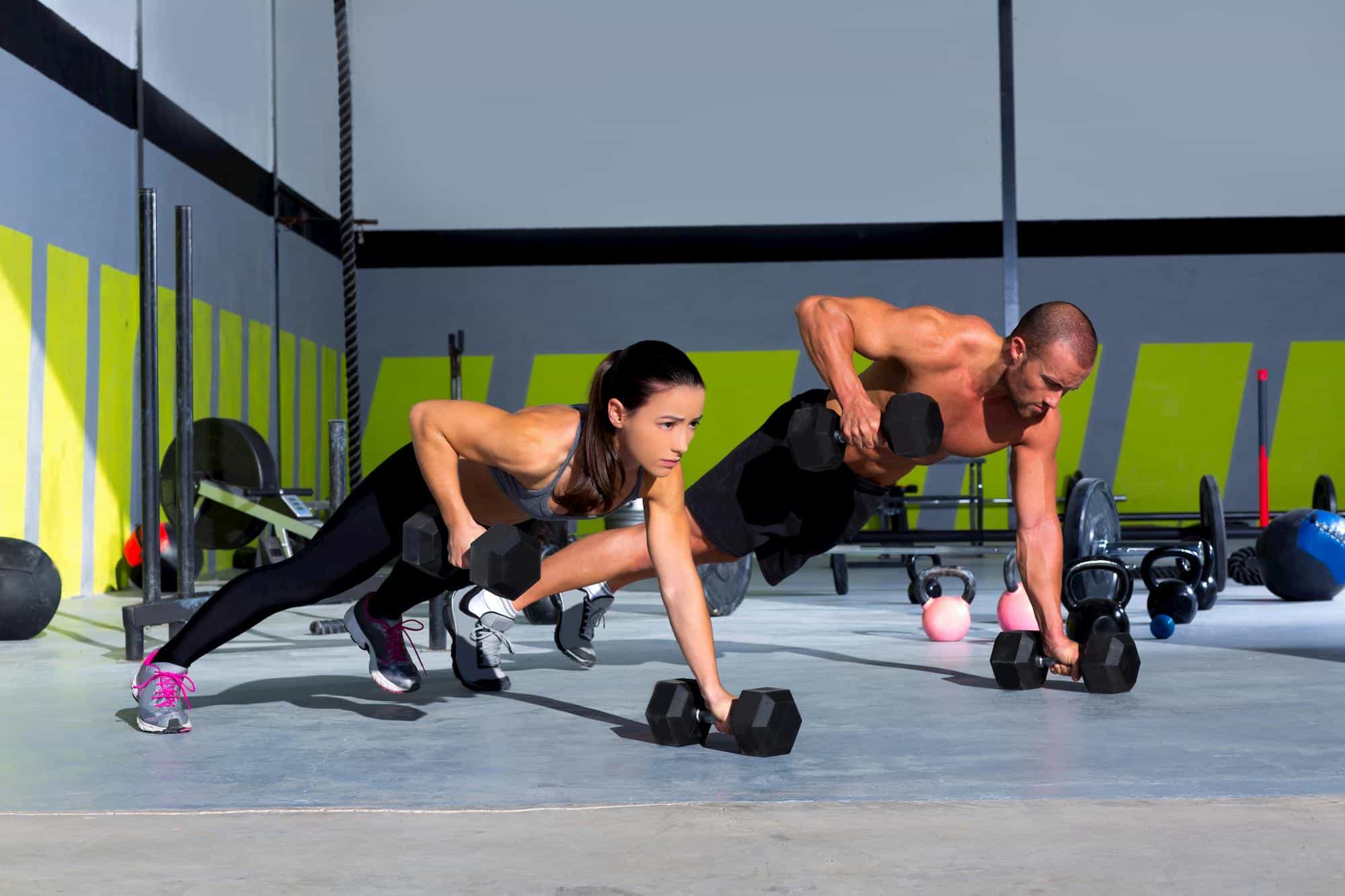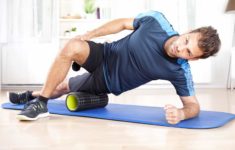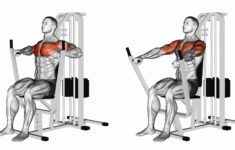When you start exercising your body starts changing. Regardless of the type of your preferred exercise regimen, after a few training sessions, you will notice that different challenges you face during workout require a specific level of strength and endurance in order to perform them the right way.
Building muscles and muscle mass is a complex and demanding discipline. Your fitness goals need to be founded on a well-structured training regimen that can eventually lead to what you envisioned at the beginning.
Many people strive toward specific results that they expect to achieve through their training. Therefore, it is very important to be adequately informed about how they should build muscle strength and endurance that would be in favour of their intended goals and also, keep their body healthy and balanced.
If you want to learn more about muscular endurance, its significance and the possible methods that improve it, read on.
Table of Contents
What Is Muscular Endurance
Muscular endurance refers to the ability of muscles to perform specific muscular action in prolonged time intervals. When you perform your regular weekly total-body session or run a marathon, you use and rely on muscular endurance.
In other words, muscular endurance is your muscles’ ability to maintain repeated contractions and keep in resistance in the long run.
A number of people may find themselves misled when distinguishing muscular endurance with muscular strength. Muscular strength is your muscles’ ability to regain strength after facing and performing a single exertion through contractions. For example, a single lift of dumbbells with a maximum weight displays the strength of your muscles.
In short, the endurance of muscles contributes to performing the same movements during a certain activity multiple times. The level of endurance measures the timeframe of the performance of a specific activity.
Understandably, the higher level of endurance of muscles will not only maintain one’s stamina during working out, but it will also protect one from physical fatigue and injuries.
But you don’t have to be a professional athlete or exhaust yourself with too intensive exercises to boost your muscular fitness. All you have to do is prepare a training schedule that will incorporate exercises such as push-ups or dumbbell lifting and add on to the frequency of repetitions or sets.
There is a wide array of home workouts that don’t require equipment that may help you improve muscular endurance.
Types of Muscular Endurance
In general, different types of exercise represent specific types of muscular endurance. In addition, the types of muscular endurance are not isolated nor unique as such, meaning each type contains features that draw out characteristics of another muscular endurance type.
One type of muscular endurance is the continuous tension, experienced in physical activities such as mountain climbing, isometric contraction, and weight training.
In continuous tension, muscles are involved in isolated exercises with slow contraction or compound exercises without stoppage.
Another type of endurance is the repetitive dynamic contraction characterized by intense sets of exercises with the same muscle group and with multiple repetitions.
Activities that support this type of muscle endurance are running, rowing and weight training.
Lastly, there are the prolonged intense contractions combined with short pauses. This type of muscular endurance can be achieved through circuit training, multiple sets, or various exercises that target the same muscle groups.
Exercises that contribute toward the rise of this type of muscle endurance are handball, weight training, and football.
Why Is It Important
The main purpose of muscular endurance is to improve your ability to perform sports activities and lift you up to new challenges you meet during workouts.
Pieces of training focused on enhancing muscular endurance may elevate your stamina, boost your overall energy, improve and maintain your health and also provide a good night’s sleep that will result in a better mood during the day.
Moreover, as you improve muscular endurance in sport, you inevitably ease the performance of everyday activities such as walking or lifting heavier objects.
As you enhance muscular endurance, you may notice that you feel less fatigue when doing other tasks incorporated in your daily life, such as car washing, gardening, playing with your kids, walking your dog etc.
Another benefit of having high muscular endurance is preventing injuries from physical exertion and overuse of certain muscle groups during training or other activities that require stamina and strength [1].
How to Improve Muscular Endurance
If you are a beginner, start slow. Try walking longer than usual kilometres during the day, then move on to fast walking and gradually increase the activities of your heart and lungs.
Fitness experts suggest focusing on training your muscles to stay the course instead of insisting on short- term exhaustive exertions.
Make sure you incorporate higher repetitions of exercises such as weightlifting, body weight and resistance exercises as well as plyometrics with shorter pauses between sets in order to gradually adjust muscles to experiencing longer intervals of stress.
Here is a list of five simple exercises you can do at home to increase your muscular endurance:
1. Push-ups
- lay flat on your stomach
- push yourself into a plank position,-hold the body with your hands and toes
- push down on your palms then lift your body up into plank again
- perform 3 sets of 18 repetitions
2. Squats
- stand up straight, position your feet slightly wider than your shoulders
- bend your legs, send your buttocks back to the height of your knees, don’t let your knees go over your toes in this position
- push yourself back upright and squeeze your glutes when you’re up
- perform 4 sets of 20 repetitions
3. Sit-ups
- lay flat on your back, place your feet on the ground and bend your legs
- place your hands behind your neck
- bring your body up and contract your stomach muscles, try not to press your neck but to rise up with your core
- perform controlled, slower movements to enhance muscle use
- perform 4 sets of 20 repetitions
4. Walking Lunges
- stand upright with your feet slightly apart to the width of your shoulders
- take a step forward with one leg, drop your body so that your back leg almost touches the floor
- push down then stand back
- exchange legs by performing 2 sets of 10 lunges
5. Plank
- lie on your stomach and make sure your hips touch the floor
- straighten your legs and prop your upper body by your forearms
- lift your hips off the ground by using your back muscles and core
- hold for 20- 45 seconds then relax
- repeat 1- 3 times
6. V-up
- lie on the ground, straighten up your legs and feet
- bring arms overhead and set them beside your ears
- lift your legs and torso together off the floor
- reach out your arms to your ankles and balance with the hips
- return to starting position
- repeat 3 sets of 18 v- ups
7. Burpee
- stand tall with your feet slightly apart to the width of your shoulder
- lower your hips in a rapid move and place your hands in front of your feet
- kick your feet into a push-up position and do a push-up
- jump your feet back under the hips
- extend your body as you jump and touch your hands behind your head
- repeat 2 sets of 8- 10 repetitions
How to Measure Muscular Endurance
Experts in fitness recommend testing muscular endurance, as well as muscular strength if you opt for strength training. Having a better insight into the exact levels of your muscular endurance may also help your sports instructor or trainer to adjust the intensity and type of exercises for your training.
In short the so-called “push-up test” is performed as a measure of the endurance of your upper body. You do as many push-ups as you can in a certain timeframe.
Categories such as sex and age also play a role in the process of assessment as parameters that may estimate the level and compare it.
You may track the starting level/ number of endurance over time and note when it increases or decreases.
The Bottom line
Muscular endurance is one of the most significant aspects of your regular workout regimen. Regardless of whether you are a beginner or an advanced sports practitioner, you ought to follow the progress of your muscular endurance in order to enhance and maintain your stamina.
By focusing on elevating your muscular stamina, you will not only prepare for greater challenges during workouts but you will also improve your overall physical and mental health.
High muscular endurance will boost your energy and help you perform tasks of your daily routine that require more strength and physical effort.
Before you opt for a specific muscular strength and endurance training, make sure you consult a fitness professional or a health care practitioner who will give you advice regarding the testing, improving and working on muscular endurance.
Lastly, don’t forget that rest is equally important as exercise for your muscles and it should be a part of your workout routine every second day.






